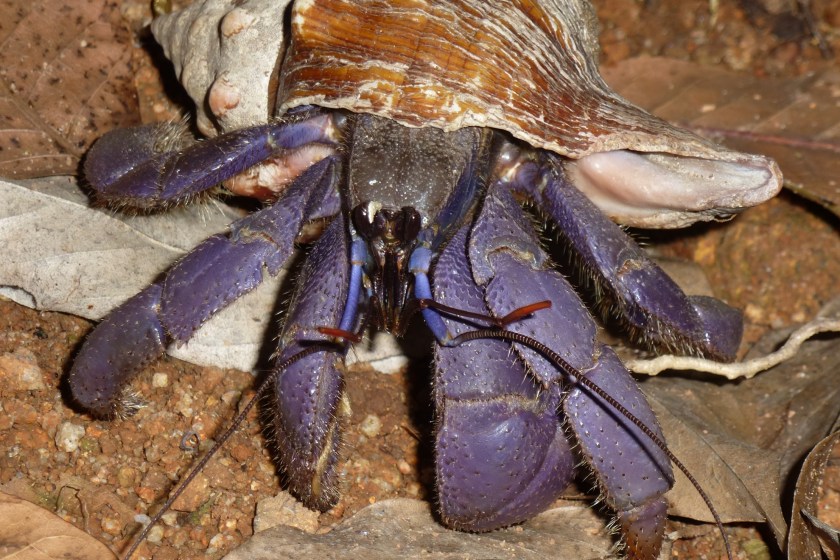Researchers were pleasantly surprised when they encountered a creature that hadn't been spotted for 150 years. Or at least, it hasn't been spotted in that region for that long. Scientists were left shocked after cavers encountered a massive blue crab in a cavern in India.
Scientists Are Shocked After They Encounter A Massive Blue Crab In India

Shutterstock Image
Introducing the coolest crab on the planet, the robber crab. Also known as the coconut crab, this massive blue crab can grow up to 3 feet long. For those who need a visual, that's the length of a yardstick or even a small child! Additionally, the NY Post shares that these babies can reach up to 11 pounds, which is a giant crab!
Researchers were exploring a small cave on Car Nicobar when they stumbled upon this blue-grey creature. Naturally, scientists were shocked to discover this crab in this region of India, as it had not been seen for quite some time. However, the world's largest terrestrial arthropod has graced these shores once again.
More Info On This Massive Blue Crab
While this species of blue crab is known as the robber crab, people more commonly refer to it as the coconut crab. That is primarily due to its habit of tearing open coconuts, which is an easy feat for this massive crab and its nutcracker-like claws. I'm sorry, but I'm not getting anywhere near a crab that's big or strong enough to crack open a coconut. The NY Post even notes that their pinch has been compared to a lion's bite. Yeah, no, thank you.
Although they have substantial populations in the Indo-Pacific region, they have not been seen in this particular part of India for quite some time. That was primarily due to habitat destruction, resulting from both human interaction and natural disasters, such as tsunamis. Following the 2004 tsunami, scientists visited the region to assess the survival of the blue crab and other species.
Although the coconut crab had survived on several islands, scientists didn't find any on Car Nicobar. The NY Post shares that "This latest sighting marks the first confirmed sighting of the invertebrate on the island since 1874." Now, you can understand why scientists were so shocked to discover them once again.
When pondering what caused their return, scientists arrived at a hypothesis. They argue that the blue crab most likely returned due to the presence of nearby coconuts and human trash. However, although human trash is of interest to these crabs, it poses significant threats to them. The crabs can become tangled in the trash or ingest it, which can be harmful to them.




